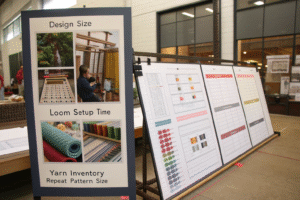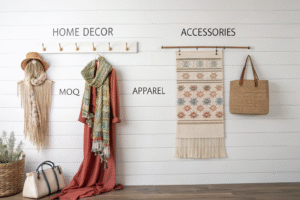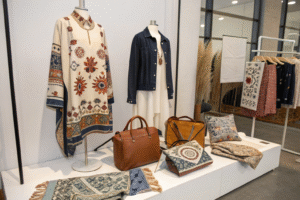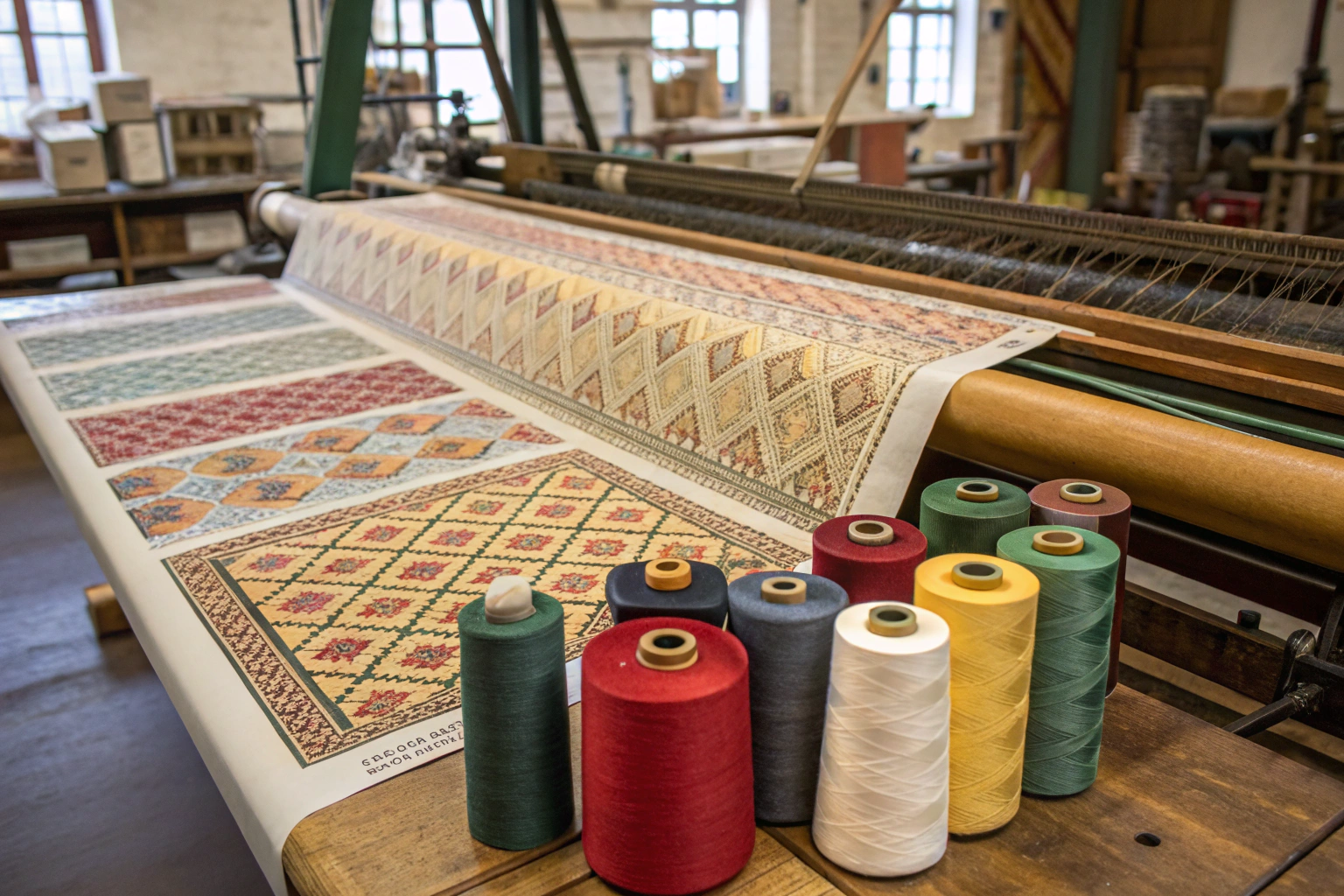Custom woven tapestry fabric offers an unmatched combination of texture, storytelling, and heritage. From art blankets to home décor, upholstery, and fashion accessories, tapestry fabric lets designers embed intricate motifs directly into the fabric weave. But sourcing it comes with a key question—what’s the minimum order quantity (MOQ) required to start custom production?
MOQ for custom woven tapestry fabric typically ranges from 50 to 300 meters, depending on the weaving technique (jacquard, dobby), fabric width, yarn setup costs, and design complexity. Some mills offer sample yardage or small-batch runs, while others require loom setup minimums.
This article explores what impacts MOQ, how to work with mills to reduce it, and where to find partners offering flexible minimums for emerging and established brands.
What Affects the MOQ for Custom Tapestry Fabric?
MOQ isn't random—it’s calculated based on production constraints. While digital printing allows for very low minimums, weaving requires physical yarn threading, loom time, and color calibration. Understanding the mechanics will help you negotiate better terms.
Key factors influencing MOQ include the number of weft colors, jacquard card programming, warp beam setup time, yarn consumption rate, and whether custom yarns must be dyed.

How Does Design Complexity Influence MOQ?
The more intricate your design:
- The more jacquard hooks or dobby harnesses needed.
- The more yarn colors required (usually 6–8 for mid-grade designs).
- The more time it takes to calibrate the loom, making low-volume less cost-effective.
For example, Textile Artist.org explains how complex tapestry designs need double-pass weft techniques, which increases time per meter.
Why Do Warp Beams and Yarn Setups Matter?
Tapestry fabrics are often made on narrow-width looms (140–180cm), and setting up a warp beam takes several hours. Mills prefer to run at least 100–300 meters once setup is complete.
Mills listed on Global Sources and Alibaba often list MOQ as 50m minimum, but that usually applies to repeat reorder patterns, not custom designs.
What Are the Typical MOQ Ranges by Product Type?
MOQ often depends on what you’re making. Custom tapestry pillows? Lower minimums. Full upholstery program? Much higher.
Most mills require 100–300 meters for jacquard tapestry yardage. For accessories like scarves or wall art, some offer low-batch MOQ of 30–50 pieces.

What MOQ Applies for Home Decor & Upholstery?
| Product | Typical MOQ |
|---|---|
| Throw blankets | 50–100 pcs |
| Upholstery fabric | 200–300 meters |
| Tapestry wall hangings | 30–50 pcs |
| Cushion panels | 100–200 pcs |
Brands like Boci Studio or Slowdown Studio often work with US or China-based jacquard mills to meet 50–100 pcs minimums per color.
What MOQ Applies for Apparel & Accessories?
- Scarves / Shawls: 30–100 pieces
- Jacket panels: 80–150 meters
- Bags / Totes: 100–200 panels (front/back = 2 pieces)
Small fashion brands often use pre-dyed recycled cotton yarns to reduce MOQ and still maintain their eco commitment. Learn more from The Sustainable Angle.
How to Reduce MOQ Without Compromising Design?
Emerging brands and design studios often want to launch capsule collections without overstock. The good news is—there are several strategies to help reduce MOQ in custom tapestry projects.
To reduce MOQ, use existing warp beams, limit the number of weft colors, adjust repeat size, or choose stock yarn colors. Partnering with mills offering shared production runs also helps.

What Are the Best Strategies?
- Use stock yarn colors to avoid dyeing cost and delay.
- Simplify designs to use fewer weft changes.
- Reduce fabric width (some looms allow 100–120cm).
- Split production batches across multiple colorways.
Mills listed on Make Works or through The Mills Fabrica offer low-impact, batch production services that cater to smaller runs.
Can Digital Jacquard Simulators Help?
Yes. At Fumao, we use jacquard CAD simulation software to preview the design in 6–8 color limitations. This reduces sampling waste and allows early design approval before committing to full MOQ.
You can explore similar tools through NedGraphics or Pointcarre.
Where to Find Low-MOQ Custom Tapestry Mills?
Your MOQ options depend greatly on your sourcing location. While large industrial mills require big runs, many boutique and heritage weaving workshops offer smaller batch flexibility.
Top regions offering low-MOQ tapestry production include Keqiao (China), Panipat (India), and the Southeastern US (North Carolina). These regions combine jacquard capability with MOQ flexibility and export readiness.
![]()
Why Source in Keqiao?
- Low-MOQ jacquard looms available (100m/color)
- Fast sampling (7–10 days turnaround)
- Yarn sourcing + packaging in one stop
- Competitive pricing for USA/EU DDP shipments
At Fumao Fabric, we support custom 6-color jacquard weave programs starting at 150 meters, with CNAS-tested durability and digital sample previews.
Explore Keqiao sourcing resources at China Textile City.
Other Flexible Locations:
- Panipat, India: Known for handloom and semi-automated jacquard—weavers offer 50–100 pcs MOQ.
- North Carolina, USA: Legacy mills like Milliken and boutique studios like The Weaving Mill cater to artisan brands.
For connections to verified low-MOQ mills, explore Makers Row or Common Objective.
Conclusion
Custom woven tapestry fabric brings unmatched heritage and tactile value to your collection—but understanding and navigating MOQ is essential for responsible sourcing. Whether you're producing throw blankets, fashion panels, or boutique wall hangings, partnering with a flexible mill makes all the difference.
At Fumao Fabric, we help you launch custom tapestry programs with minimums starting from 150 meters, offer color simulations, certified yarns, and DDP delivery to global markets. If you’re ready to bring storytelling to life through rich jacquard texture, we’re here to help.
To explore MOQ options, sample development, or see our virtual swatchbook, contact our Business Director Elaine at elaine@fumaoclothing.com. Let’s create fabric that tells your story, stitch by stitch.










